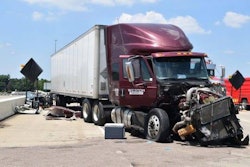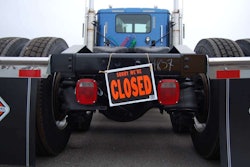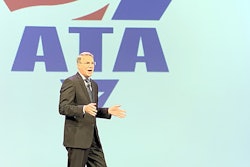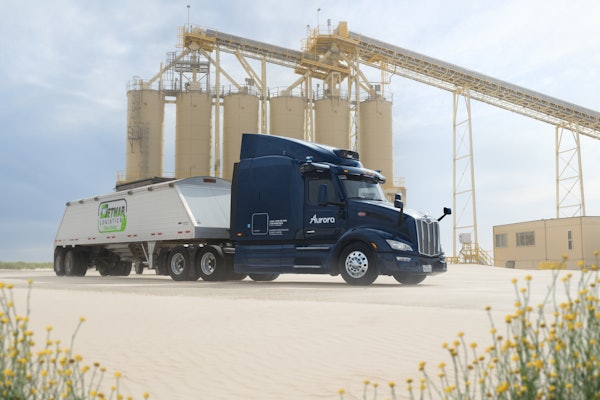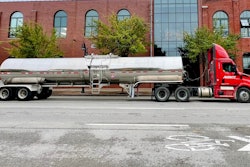This story originally published March 12, 2020. This is the first of a two-part series on the growing trend of large court-ordered settlements in truck crash lawsuits. Part 2 covers who pays for these settlements and how your fleet can protect itself against such verdicts.
 The trucking industry has seen an alarming trend of large verdicts against trucking companies involved in accidents with serious injuries or fatalities, sometimes regardless of fault.
The trucking industry has seen an alarming trend of large verdicts against trucking companies involved in accidents with serious injuries or fatalities, sometimes regardless of fault.Courts in recent years have taken up an alarming trend in crash litigation against trucking companies: Awarding mega settlements, sometimes regardless of fault, to plaintiffs who sue carriers after a crash. Often, this includes courts digging into fleets’ pasts – including driver training and orientation – to find justification for multi-million-dollar payouts.
Juries think “somebody has to pay,” in these cases, said Annette Sandberg, CEO of TransSafe Consulting and former administrator of the Federal Motor Carrier Safety Administration, even if the fleet or driver wasn’t at fault. “I think verdicts will keep going up and up,” she added. “Short of tort reform with some kind of limits, I just don’t know [where they will stop]. It’s unfortunate. It ends up costing all of us.”
Such “nuclear verdicts,” a term made popular by the American Trucking Associations and some media outlets over the past year, have had a ripple effect throughout the trucking industry, forcing some carriers into bankruptcy and causing insurance rates to skyrocket.
“Nuclear verdicts” generally refer to cases in which a jury returns a settlement of $10 million or more. That’s well above the $750,000 in liability insurance required and the $1 million that most trucking companies hold, often leading to lawsuits against insurers and, sometimes, fleets liquidating assets to pay. Verdicts have reached as high as $281 million, in a 2013 case, Aguilar v. Heckmann Water Resources, in which the drive shaft of a Heckmann truck broke off and killed motorist Carlos Aguilar.
Attorneys point to climbing medical costs, new tactics by plaintiff attorneys, changing societal views around money and court precedent as factors in the trend toward runaway verdicts.
“Really good plaintiff lawyers that had done product liability, medical malpractice, class-action and other cases began to move [away] from those areas,” said Charles Carr, president of the Birmingham-based firm Carr Allison. “There was a lot of tort reform in medical malpractice with protections against these runaway verdicts. They moved over to trucking litigation.”
Carr traces the rise of these verdicts to a 2011 case out of Georgia, Foster v. Landstar Ranger.
In that case, which involved a fatal crash, liability was clear – the truck driver had run a red light and hit a vehicle, killing one of its occupants. The consensus among those involved in the case, said Carr, was that the judgment against the fleet would be about $10 million, but the fleet’s insurer took the case to court, hoping for a smaller settlement.
When the verdict came back, it was for $40 million, Carr said. “It shocked everyone. It wouldn’t be so shocking today, based on what we’ve seen.”
The attorney that won the Landstar Ranger case then went on a speaking tour, teaching other attorneys how he won the case and plaintiff attorneys working truck crashes have since, in many cases, refused settlements with fleets, Carr said.
“They refused to settle for what were deemed to be reasonable amounts” and instead took them to trial, he said. “It was a snowball effect, and since that time, it spread like a virus. These verdicts went from Georgia to California to New Mexico, Texas, Louisiana, Alabama, Florida, South Carolina.”
Michael Langford, a partner at transportation law firm Scopelitis, Garvin, Light, Hansen and Feary, said rising costs of medical care is another key reason behind the trend toward huge verdicts against fleets.
“In most personal injury cases, a component is medical expenses, past and future,” he said. “We have higher medical expenses than in the past, so now you also have a person injured and needs future medical care, there is a projection about where healthcare is going.”
Likewise, he said, plaintiff attorneys have taken on new tactics in court, using what’s called the “reptile theory.”
“They want to stir [jurors] up with such emotion that, even at the most basic reptilian level, they have to award a big number to send a message,” Langford said. “They work hard at showing the trucking company is engaged in systemic failures designed at causing harm. They want to back it all up and go to what caused a trucker to blow through a red light, including a systemic failure to hire right, offer the correct orientation and training, etc. They want to prove a failure to engage in all safety measures to prevent all possible accidents.”
Langford says the theory is even used to score payouts from fleets even when truckers aren’t at fault in a crash.
For example, in a case involving Werner Enterprises, which resulted in a $90 million verdict against the fleet, the crash was clearly the fault of another driver. A pickup truck lost control on the opposite side of a highway in Texas, crossed the median into the path of the Werner truck. The crash resulted in the death of a 7-year-old and serious injuries to a 12-year-old.
Carr said the plaintiff attorneys’ strategy in that case was a prime example of the “reptile theory.”
“What they did in Houston was they brought in all this evidence about how [Werner] trained their drivers,” he said. “They bring in all this stuff, but the driver in that accident was doing nothing wrong. The jury focuses on the conduct.”
Werner has appealed the verdict, and Carr predicts it will head to the Texas Supreme Court in the coming years.
“[Werner] did everything right – everything they should have done,” he said. “You can’t pay millions to settle a case that you have absolutely no liability whatsoever for. All they could do was take the verdict – they were shocked by it – then take it up on appeal. My prediction is that within two years, there will be a case known as the ‘Werner Case’ and the Texas Supreme Court will say nothing that the trucking company did was the proximate cause of that accident.”
Calls for reform
The key to mitigating the cascading effects that such huge verdicts have on the industry lies in tort reform at the Congressional level, which Sandberg said is a tall order given the current dysfunction in Washington. “Everybody would like to see tort reform, but we can’t get Congress to agree on anything,” she said.
American Trucking Associations’ President Chris Spear in October said ATA has made tort reform on truck crash litigation a “tier one priority.”
“These nuclear verdicts are strangling our industry,” he said. “We will back our state association executives that pursue ballot initiatives – going state-to-state to fight… until we have won,” he said.
At the state level, some work has been done, said Langford, but that doesn’t address a national industry like trucking. “We have 50 states of patchwork laws,” he says. “Often it’s reform around the edges. They aren’t addressing what needs to be addressed to bring damages down.”
Carr said the need for reforms on such litigation is dire. It “will either happen soon or it will get to the point where insurance for the motor carrier industry becomes so expensive that either they can’t get it or that many smaller companies go out of business,” he said. “Somebody has to pay for that. Freight costs will go up, or [goods] won’t be delivered.”





